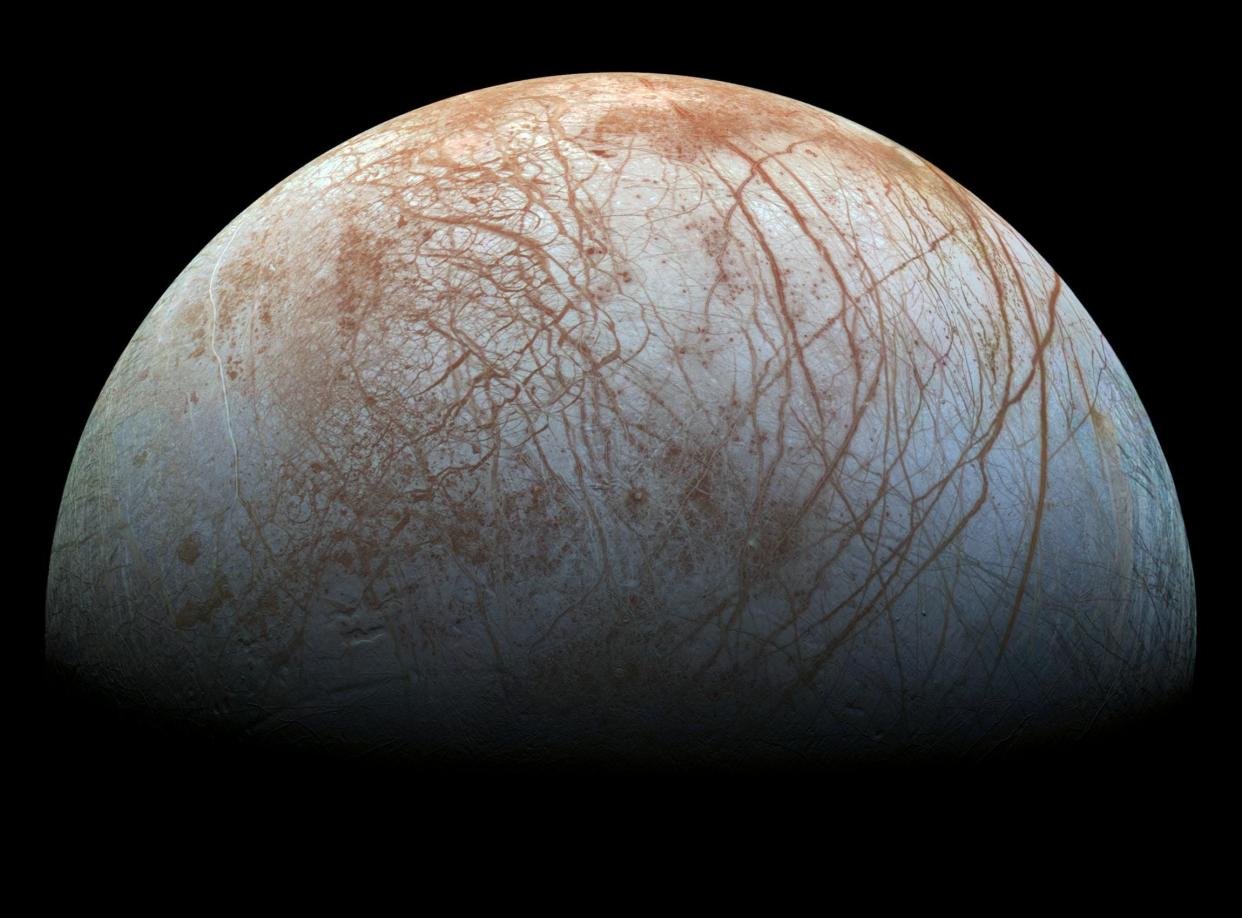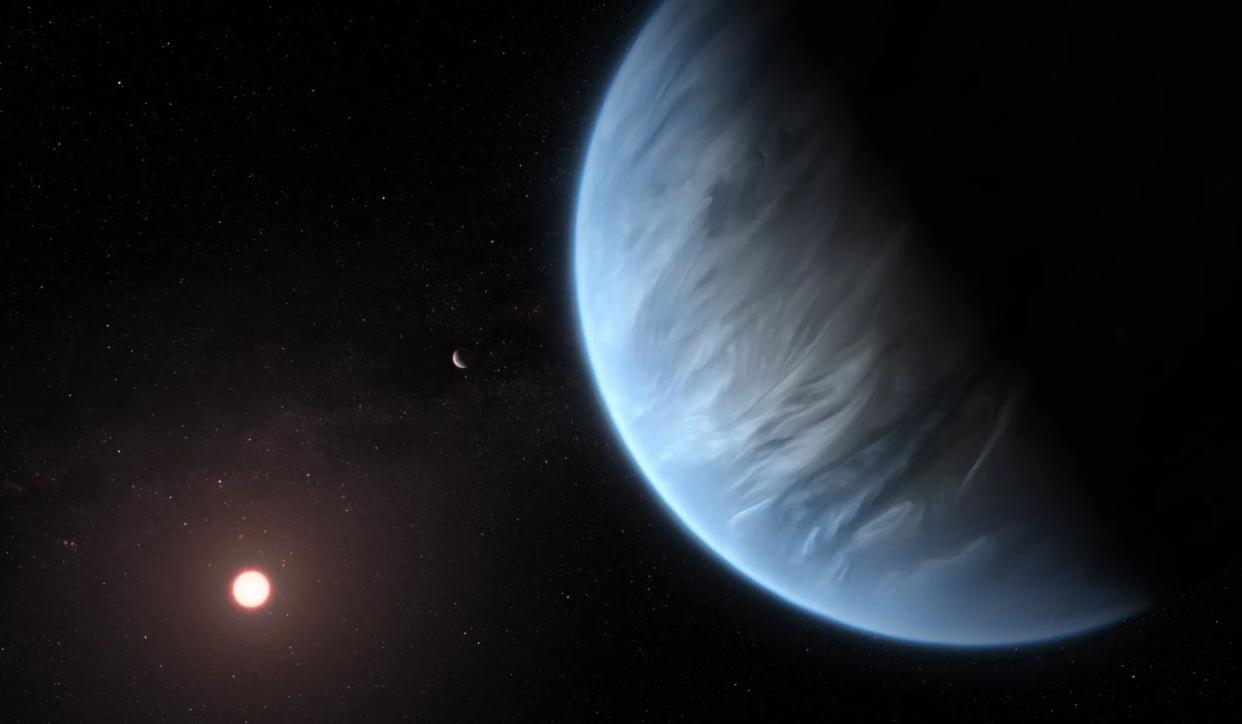As scientists ponder if there's life out there, don't forget the eclipse is coming
Two recent studies have excited scientists interested looking for extraterrestrial life. Both hint at possible life on other celestial bodies.
The one closest to home comes from the ongoing Juno spacecraft mission studying Jupiter and its moons. Astronomers have long known that one of Jupiter’s moons, Europa, is covered with a thick layer of water ice, and below that icy shell lies an ocean up to 100 miles deep which holds more water than all of Earth’s oceans. The combined gravity of giant Jupiter and Ganymede, the largest moon in our solar system, pull and squeeze Europa, providing the energy to keep that ocean liquid.

That same gravitational tug-of-war may create volcanic vents on the floor of Europa’s ocean. The vents constantly pump minerals into the water, the same circumstance that many scientists believe led to life on Earth.
The latest data from Juno indicates that Europa generates 1,000 tons of oxygen every 24 hours. That’s enough oxygen to support 1 million humans. On Earth, free oxygen is produced by living plants. The bulk of our oxygen comes from tiny algae plants in the ocean using photosynthesis to create food and release oxygen as a byproduct.
The researchers believe that charged particles driven by Jupiter’s strong magnetic field impact the icy shell on Europa and break apart the water molecules to create free oxygen. While the oxygen isn’t produced by life processes, researchers believe that this oxygen can make its way through the icy shell to the ocean below. This oxygen may then accelerate the evolution of any life in the ocean to create more complex creatures, just as happened in Earth’s oceans.
Scott Bolton, Juno’s principal investigator from the Southwest Research Institute in San Antonio, Texas, said, “Our ability to fly close to the Galilean satellites during our extended mission allowed us to start tackling a breadth of science, including some unique opportunities to contribute to the investigation of Europa’s habitability.”
The other study comes from the Webb space telescope. In 2015, NASA’s K2 mission discovered a planet dubbed K2-18b orbiting a cool, red dwarf star. K2-18b sits in the star’s habitable zone where liquid water can exist on the surface. The research study led by Nikku Madhusudhan, a professor at the University of Cambridge, identified methane and carbon dioxide in the planet's atmosphere, a strong indication that the planet could be covered in an ocean.

K2-18b is a sub-Neptune planet, one between the size of Earth and Neptune, but, since no such planet exists in our solar system, we don’t understand their properties very well. "Although this kind of planet does not exist in our solar system, sub-Neptunes are the most common type of planet known so far in the galaxy," said Subhajit Sarkar of Cardiff University, co-author of the study. "We have obtained the most detailed spectrum of a habitable-zone sub-Neptune to date, and this allowed us to work out the molecules that exist in its atmosphere," Sarkar added.
That spectrum indicated the presence of dimethyl sulfide which only living organisms can produce, at least here on Earth. Is this ocean world teeming with life? It's far too early to know if life exists there says Madhusudhan, and the researchers were quick to point out that more data is urgently needed. ''If confirmed,” he said, “it would be a huge deal and I feel a responsibility to get this right if we are making such a big claim."
More: When is the 2024 total solar eclipse? Your guide to glasses, forecast, where to watch.
Eclipse highlights April
The total solar eclipse occurs on the April 8, with the peak coverage at 12:17. If you can get to the path of totality, in far southeast Oklahoma, you can get an extra treat. All five visible planets, Mercury, Venus, Mars, Jupiter and Saturn, will be up during the eclipse. And in the darkness of the total eclipse, you may be able to see all of them. Venus, Saturn, and Mars will be west of the sun, with Mercury and Jupiter east of it. Mercury will be the toughest, being the closest to the sun, but the others may well be glimpsed during the eclipse.
Wherever you plan to view the eclipse, make sure you have proper eye protection. Eclipse glasses may be purchased from the Science Museum Oklahoma gift shop and many places online, such as Amazon. If you can get to the path of totality, you won’t need the glasses during totality, but only then. And don’t forget a camera. The sight is breathtaking and you may want to save it.
More: Will you be near the path of the total solar eclipse in Oklahoma? Share your plans with us
Planet Visibility Report
Mars and Saturn remain visible in the morning sky all month. Venus starts out there but moves slowly towards the sun and is lost by mid-month. Mercury moves from being lost in the evening twilight glare to peak visibility in the morning sky by the end of April. Jupiter is visible after sunset but slides slowly toward the sun all month. New moon occurs on the April 8 for the total eclipse of the sun with full moon following on April 23.
This article originally appeared on Oklahoman: Is there life out there? The eclipse nears | Stargazing
